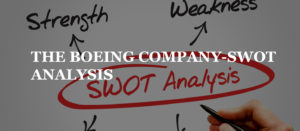I have chosen Organizational learning as a topic for the critical literature review. Organizational learning has gained a lot of significance in the presence and development of information technology in order to gain competitive advantage and survival. A huge amount of research work is being conducted on this topic in business schools around the world. Organizational learning has been defined and refined by many researchers. It is recognized as a process of improving actions through better knowledge and understanding. In this text, the critical literature appraisal and comparison of three articles on organization learning is presented.
Organizational Learning:
This research paper attempts to explore the two basic concepts of organizational structure and facilitation & prevention of organizational learning. This paper further tries to establish some correlation between these concepts. This paper argues that the contingency approach of organizing is ineffective keeping in view the internal dynamics and strengths of the organization to cope with the environmental uncertainties. In the end, it proposes a structure that is effective for the individual as well as organizational learning.
This study paper explores the issue on the basis of literature review and puts light on how organizations can structure to be better learning organizations. One of the strengths of this paper is that its insights on organizational structures are intensive in nature and full focus on organizational learning.
This research paper in a critical way has extensively explained the structures of the organizations that can contribute to organizational learning and the process of learning. One of the strengths of this literature review is that it draws a conclusion that gives the manager an impetus for developing learning potential for their corporations in order to gain a competitive advantage. The study’s strength also lies invalid conclusions and managerial implications. Moreover, it suggests them to implement skills of effective knowledge management. It also provides a roadmap and the theoretical base for the further study such as:
One study can be carried to check the following
The hypothesis could be: Do M-type organizations learn fast?
Another study can be carried to find out how people interact within an organization
The hypothesis could be: Does different interaction have different effects on learning within an organization?
However, the research methodology is not rigorous as it draws a conclusion and gives implications on the basis of literature review and becomes oversimplified. It ignores literature review on certain factors that could strengthen the study. It does not take into account all dimensions of knowledge transferring in organizations. For example, knowledge in the form of value, behaviors, assumptions, and emotions are hard to transfer. This research work also does not study the intra-organizational heterogeneity of members’ mental schemata.
these are a more related essay:
-
The legitimating of learning
This research work looks at the organizational learning from a very different angle and adopts a narrative style of describing autobiographies of learning and change at organizational levels. It adopts a discursive style and looks at organizational learning as a metaphor for understanding organizational life which is an amalgam of highly different and varied views and changing stories. This approach comes with certain benefits and covers the areas and factors that were looked to be missed in the previous study “Structuring for organizational learning”. The soft knowledge such as values, culture, assumptions, and stories have been incorporated in this research work on the proposition that organizations are made of individuals and subgroups having conflicting goals and views that can be resolved the use of power.
Moreover, storytelling research technique is quite effective in this organizational learning analysis that adopts the pluralistic approach. These organizational stories work like an inquiry into how learning is perceived and represented by individuals in an organization as a metaphor for understating organizational life having conflicting viewpoints and stories.
The story telling approach also seems effective as it gives the understanding of organizational change that has varied themes. Some of them are learning themes. It also allows an entertainment of the notion of improvement. Moreover, stories in a way take the form of cases that are extensively applicable in the corporate world. One of the strengths of this study is the organizational multicultural aspects and power and the role of management has also been taken into consideration.
However, this study lacks a true theoretical base needed to establish the legitimacy of organizational learning and only relies on a few studies and thus draws the conclusion. There is also a problem of reliability of the stories and their interpretations. We also know that interpretation of stories would vary from person to person, thus conclusion drawn on the basis of these interpretations would have biasness. As corporate stories may take the form of personal stories, the true purpose of the research study may be lost.
-
Conviction and doubt in organizational learning
As learning begins when we start questing the status quo, this research study puts light on how doubt and convictions operate to foster organizational learning. This research paper first explores the concepts of doubt and conviction, on the basis of which, formulates a model to represent how doubt and conviction work to create an organizational learning environment and then presents a brief case study to draw practical applications of how doubt and conviction assist interventions in organizational learning.
This research works looks better than the previous studies discussed above, as it amalgamates both the features of them such as theory as well as case study. Moreover, it presents a model on organizational learning on the basis of theory and case study. This paper presents that doubt works like a spark to ignite the organizational learning as it gives rise to inquiry and questioning. However, the conviction is also needed as it provides courage to follow one’s creative thinking and do experiments to confront the status quo.
Moreover, the model presented in this study has a much more practical application as it takes into account the individual as well as collective factors of an organization to be a learning one. As the analysis shows, organizational learning can take place through various intervention points focusing and including both individuals as well as collective changes, so both have to be planned. Interventions aimed at the creation of doubt are different those focused at the creation of convictions; doubt is recognized to be an individual capacity and that consensus or organizational conviction demands collective agreement which is referred to as “paradigm shift”.
This research paper also invites us to study many other dimensions of organizational learning such as individual as well as organizational levels and how both of them correlate with each other or differentiate.
The study also suggests that new research can be aimed at the followings:
The relationship between doubt and conviction and their individual effects on organizational learning
This study cab also is combined with the study of “Legitimating organizational learning” to get better results.
However, this research work still lacks true definitions of doubt and conviction as they are psychological concepts and thus require further refinement. Moreover, its generalizbility is also questioned as it is much difficult to study doubt and conviction at complex organizations having diverse cultures. Theses conce.pts have to be tested empirically.
Comparison:
| Articles |
The legitimating of learning
|
Structuring for organizational learning
|
Conviction and doubt in organizational learning |
| Approach/study Type | Narrative and Inquiry
|
Theoretical study | Theoretical/case study
|
| Generalisability | low | High | Low |
| Validity | No | Yes | yes |
| Data Collection Method | Literature/Stories | Literature Review | Case Study |
| Models suggested | No | No | Yes |
Conclusion:
It is clear from the above-noted research studies that every research comes with strength as well as weaknesses and demands for further research work to enhance the known dimensions.
We have also observed that one concept can be studied in various ways applying different approaches of data collection, study types, literature reviews. One of the major things that can be a major difference among the studies conducted on a similar topic is the theoretical background on which the concepts are built and further models are based. If we lack a true theoretical basis, our research study may not be able to present valid results and implications.
Organizational learning has been defined as a process that involves confronting our own behavior openly. We have also seen that self-doubt is essential for igniting the learning as we start doubting the current established practices at an organizational level, learning starts to take place.
Organizational learning is now one of the strengths of modern-world organizations in order to achieve better performance, develop organizational efficiency, serve greater business value and gain a competitive edge.
One of the dimensions of organizational learning is innovation that takes place through shard-vision, inter-organizational knowledge sharing, and open-mindedness. We have also learned through these studies that learning process at an individual as well as the organizational level has to be supported in order to become intelligent organizations. To do this they also need to break the conventional rigid boundaries and build leadership, diversified teams, free collaboration etc. as the organizational structure greatly influences the organizational learning process and its effectiveness at the corporate level.



